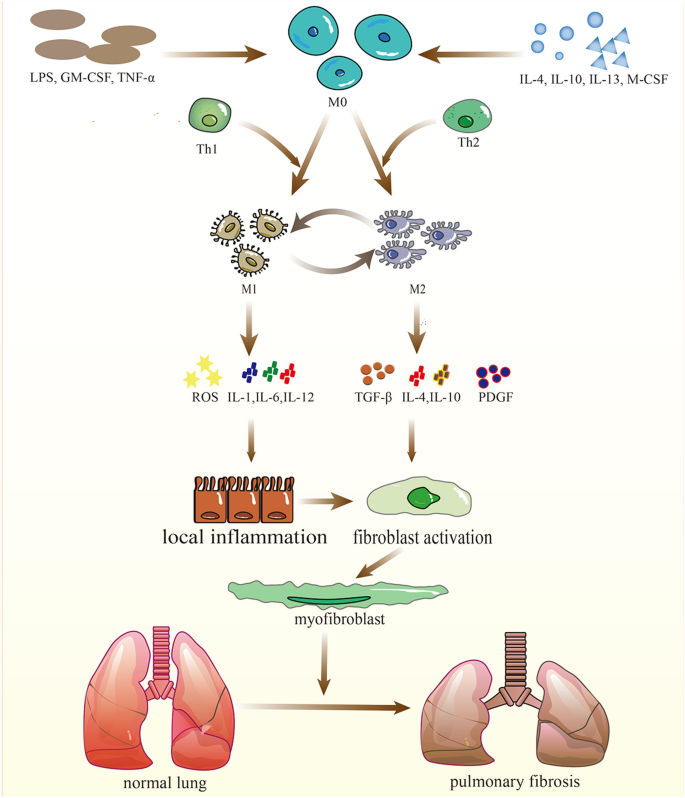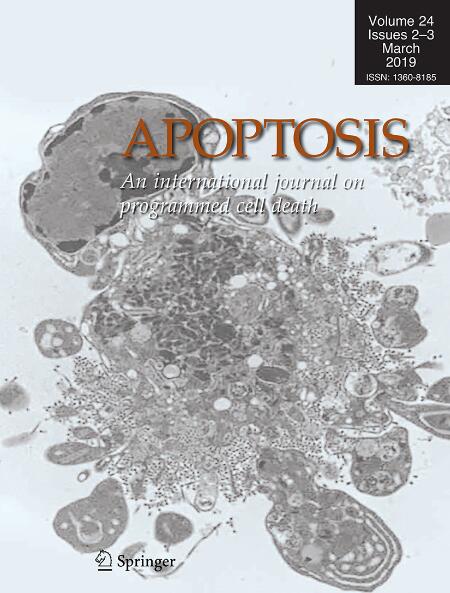Regulation of alveolar macrophage death in pulmonary fibrosis: a review
Abstract
Pulmonary fibrosis (PF) is a disease in which excessive extracellular matrix (ECM) accumulation occurs in pulmonary mesenchyme, which induces the destruction of alveolar structures and poor prognosis. Macrophage death is responsible for ECM accumulation after alveolar epithelial injury in PF. Depending on the local micro-environments, macrophages can be polarized to either classically activated (M1) or alternatively activated (M2) macrophage phenotypes. In general, M1 macrophages can promote inflammation and sterilization, stop the continuous damage process and prevent excessive repair, while M2 macrophages are anti-inflammatory and promote tissue repair, and excessive M2 macrophage activity may inhibit the absorption and degradation of ECM. Emerging evidence has revealed that death forms such as pyroptosis mediated by inflammasome affect polarization direction and ultimately lead to the development of PF. Pharmacological manipulation of macrophages death signals may serve as a logical therapeutic strategy for PF. This review will focus on the current state of knowledge regarding the regulation and underlying mechanisms of macrophages and their mediators in the influence of macrophage death on the development of PF. We expect to provide help in developing effective therapeutic strategies in clinical settings.


 求助内容:
求助内容: 应助结果提醒方式:
应助结果提醒方式:


